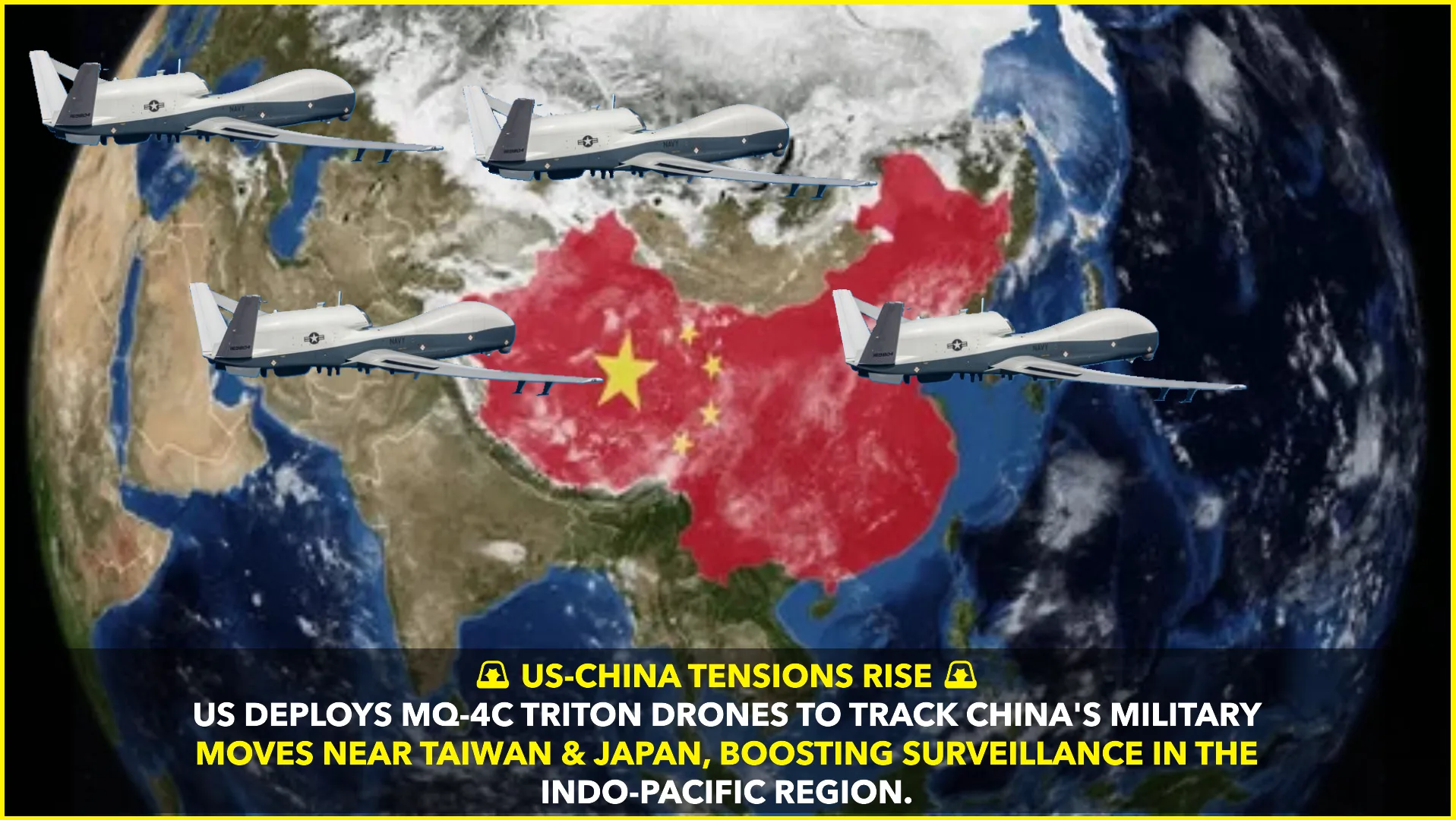April 10, 2025 | Washington DC / Indo-Pacific Bureau
In a strategic move to counter China’s escalating military presence near Taiwan and Japan, the United States has deployed its advanced MQ-4C Triton unmanned aerial vehicles (UAVs) to bolster surveillance operations in the Indo-Pacific region. These high-altitude, long-endurance drones, known for their cutting-edge intelligence-gathering capabilities, have an impressive operational range of approximately 8,500 miles (13,700 kilometers), allowing persistent coverage of vast maritime zones including the East China Sea and South China Sea.
Pentagon officials confirmed the deployment on Tuesday, stating that the MQ-4C Triton drones are being stationed at key US military installations in Guam and Japan’s Okinawa Prefecture. The decision comes amid rising concerns over Beijing’s increased naval drills, airspace incursions, and the rapid expansion of its military infrastructure near Taiwan.
“The MQ-4C Triton enhances our ability to maintain situational awareness and maritime domain control in one of the most strategically significant and contested regions of the world,” said a senior US Navy official, speaking on condition of anonymity. “It’s a clear message that the United States remains committed to the security of its allies and the rules-based international order.”
A Response to China’s Expanding Footprint
Over the past year, the People’s Liberation Army (PLA) has intensified its military operations around Taiwan, including regular sorties by Chinese warplanes into Taiwan’s air defense identification zone (ADIZ). In March 2025 alone, Taiwan’s Ministry of National Defense reported more than 60 Chinese military aircraft entering its ADIZ in just two weeks.
Meanwhile, tensions have also flared in the East China Sea, where China disputes territorial claims with Japan over the Senkaku Islands. The increased presence of Chinese coast guard ships and military vessels in the region has prompted alarm among Japanese defense officials.
The MQ-4C Triton drones are expected to play a crucial role in monitoring these developments in real time. Developed by Northrop Grumman, the MQ-4C is a maritime surveillance version of the RQ-4 Global Hawk and is designed to fly at altitudes of over 50,000 feet for more than 24 hours. The drone carries advanced sensors, including radar and electro-optical/infrared cameras, enabling it to detect and track surface and airborne targets across thousands of miles.
Strengthening Indo-Pacific Surveillance
Defense analysts believe the deployment is part of a broader U.S. strategy to build an integrated intelligence network across the Indo-Pacific, linking air, sea, and space-based assets. The move complements joint patrols and military exercises that the U.S. has been conducting with Japan, Australia, and the Philippines in recent months.
“The Triton gives the U.S. and its allies unmatched eyes in the sky,” said Carl Schuster, a retired U.S. Navy captain and former director of operations at the U.S. Pacific Command’s Joint Intelligence Center. “Its persistent presence helps identify potential threats early, track adversary movements, and guide real-time responses, all without putting pilots at risk.”
China, in response, has condemned the deployment. A spokesperson for the Chinese Ministry of Foreign Affairs accused the U.S. of “militarizing the Asia-Pacific region” and “provoking confrontation under the guise of surveillance.”
However, regional experts argue that with China’s own surveillance and drone programs expanding rapidly, the U.S. is merely keeping pace with the evolving security dynamics.
Looking Ahead
As geopolitical tensions continue to rise in the Taiwan Strait and East China Sea, the role of unmanned systems like the MQ-4C Triton is likely to grow significantly. With the drone now fully operational in the Indo-Pacific, the U.S. is poised to enhance not only its intelligence capabilities but also its ability to deter aggression in one of the world’s most sensitive flashpoints.
Sources:
- U.S. Department of Defense briefings
- Northrop Grumman (manufacturer’s specifications)
- Taiwan Ministry of National Defense reports
- Chinese Ministry of Foreign Affairs press statements
- Expert commentary from Indo-Pacific defense analysts










